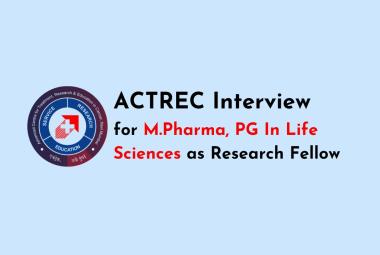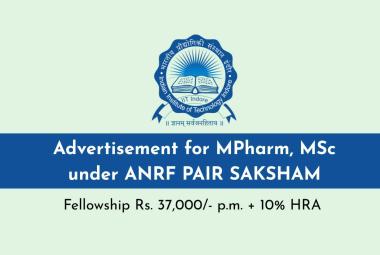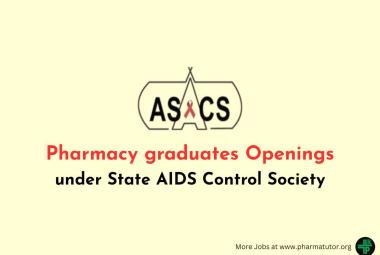 About Author: Ashish Chauhan
About Author: Ashish Chauhan
M.Pharm (Pharmaceutical Chemistry)
Department of Pharmaceutical Sciences,
Lovely Professional University, Jalandhar (Punjab).
The Montreal Protocol on Substances that Deplete the Ozone Layer
(A Protocol to the Vienna Convention for the Protection of the Ozone Layer)
Ozone Layer
- The ozone layer is a layer in Earth's atmosphere which contains relatively high concentrations of ozone (O3).
- This layer absorbs 97–99% of the Sun's high frequency ultraviolet light, which is damaging to life on Earth.
- It is mainly located in the lower portion of the stratosphere from approximately 30 to 40 kilometres above Earth, though the thickness varies seasonally and geographically.
- The ozone layer was discovered in 1913 by the French physicists Charles Fabry and Henri Buisson.
- Its properties were explored in detail by the British meteorologist G. M. B. Dobson, who developed a simple spectrophotometer (the Dobson meter) that could be used to measure stratospheric ozone from the ground.
- Between 1928 and 1958 Dobson established a worldwide network of ozone monitoring stations, which continue to operate to this day.
- The "Dobson unit", a convenient measure of the columnar density of ozone overhead, is named in his honour.
Reference ID: PHARMATUTOR-ART-1095
Depletion of Ozone layer
The ozone layer can be depleted by free radical catalysts, including nitric oxide (NO), nitrous oxide (N2O), hydroxyl (OH), atomic chlorine (Cl), and atomic bromine (Br). While there are natural sources for all of these species, the concentrations of chlorine and bromine have increased markedly in recent years due to the release of large quantities of manmade organohalogen compounds, such as chlorofluorocarbons (CFCs), bromofluorocarbons. These highly stable compounds are capable of surviving the rise to the stratosphere, where Cl and Br radicals are liberated by the action of ultraviolet light. Each radical is then free to initiate and catalyze a chain reaction capable of breaking down over 100,000 ozone molecules. The breakdown of ozone in the stratosphere results in the ozone molecules being unable to absorb ultraviolet radiation. Consequently, unabsorbed and dangerous ultraviolet-B radiation is able to reach the Earth’s surface. Ozone levels over the northern hemisphere have been dropping by 4% per decade. Over approximately 5% of the Earth's surface, around the north and south poles, much larger seasonal declines have been seen, and are described as ozone holes. In 2009, nitrous oxide (N2O) was the largest ozone-depleting substance emitted through human activities.
Regulations
- The Montreal Protocol on Substances That Deplete the Ozone Layer is an international treaty designed to protect the ozone layer by phasing out the production of numerous substances believed to be responsible for ozone depletion.
- The treaty was opened for signature on September 16, 1987, and entered into force on January 1, 1989, followed by a first meeting in Helsinki, May 1989. Since then, it has undergone seven revisions, in 1990 (London), 1991 (Nairobi), 1992 (Copenhagen), 1993 (Bangkok), 1995 (Vienna), 1997 (Montreal), and 1999 (Beijing).
- It is believed that if the international agreement is adhered to, the ozone layer is expected to recover by 2050.
- Due to its widespread adoption and implementation it has been hailed as an example of exceptional international co-operation, with Kofi Annan quoted as saying that "perhaps the single most successful international agreement to date has been the Montreal Protocol". It has been ratified by 196 states.
Terms and Purposes
The treaty is structured around several groups of halogenated hydrocarbons that have been shown to play a role in ozone depletion. All of these ozone depleting substances contain either chlorine or bromine (substances containing only fluorine do not harm the ozone layer).
The treaty provides a timetable on which the production of those substances must be phased out and eventually eliminated such as
i. Chlorofluorocarbons (CFCs) Phase-out Management Plan
Various provisions were made which limits the use of CFCs.
ii. Hydrochlorofluorocarbons (HCFCs) Phase-out Management Plan (HPMP)
Various provisions were made which limits the use of HCFCs.
The HCFCs are transitional CFCs replacements, used as refrigerants, solvents, blowing agents for plastic foam manufacture, and fire extinguishers.
In term of Ozone Depleting Potential (ODP), in comparison to CFCs that have ODP 0.6 – 1.0, these HCFCs have less ODP, i.e. 0.01 – 0.5.
Whereas in term of Global Warming Potential (GWP), in comparison to CFCs that have GWP 4,680 – 10,720, HCFCs have less GWP, i.e. 76 – 2,270.
There are a few exceptions for "essential uses", where no acceptable substitutes have been found (for example, in the metered dose inhalers commonly used to treat asthma and other respiratory problems) or Halon fire suppression systems used in submarines and aircraft (but not in general industry).
Impact
- Since the Montreal Protocol came into effect, the atmospheric concentrations of the most important chlorofluorocarbons and related chlorinated hydrocarbons have either levelled off or decreased.
- Halon concentrations have continued to increase, as the halons presently stored in fire extinguishers are released, but their rate of increase has slowed and their abundances are expected to begin to decline by about 2020.
- The concentration of the HCFCs increased drastically at least partly because for many uses CFCs (e.g. used as solvents or refrigerating agents) were substituted with HCFCs. While there have been reports of attempts by individuals to circumvent the ban, e.g. by smuggling CFCs from undeveloped to developed nations, the overall level of compliance has been high. In consequence, the Montreal Protocol has often been called the most successful international environmental agreement to date.
- In a 2001 report, NASA found the ozone thinning over Antarctica had remained the same thickness for the previous three years, however in 2003 the ozone hole grew to its second largest size. The most recent (2006) scientific evaluation of the effects of the Montreal Protocol states, "The Montreal Protocol is working: There is clear evidence of a decrease in the atmospheric burden of ozone depleting substances and some early signs of stratospheric ozone recovery."
- Unfortunately, the hydrochlorofluorocarbons, or HCFCs, and hydrofluorocarbons, or HFCs, are now thought to contribute to anthropogenic global warming. On a molecule for molecule basis, these compounds are up to 10,000 times more potent greenhouse gases than carbon dioxide. The Montreal Protocol currently calls for a complete phase out of HCFCs by 2030, but does not place any restriction on HFCs. Since the CFCs themselves are equally powerful as greenhouse gases, the mere substitution of HFCs for CFCs does not significantly increase the rate of anthropogenic global warming, but over time a steady increase in their use could increase the danger that human activity will change the climate.
References
The Ozone layer. nas.nasa.gov/About/Education/Ozone/ozonelayer.html (Accessed on Aug 01, 2011).
Science: Ozone Basis. ozonelayer.noaa.gov/science/basics.html (Accessed on Aug 01, 2011).
Ozone Layer Protection: Science. epa.gov/ozone/science/q_a.html (Accessed on Aug 02, 2011).
The Montreal Protocol on Substances that Deplete the Ozone Layer. ozone.unep.org/pdfs/Montreal-Protocol2000.pdf (Accessed on Aug 04, 2011).
Brief Primer on the Montreal Protocol. ozone.unep.org/Publications/MP_Brief_ Primer_ on_MP-E.pdf (Accessed on Aug 04, 2011).
NOW YOU CAN ALSO PUBLISH YOUR ARTICLE ONLINE.
SUBMIT YOUR ARTICLE/PROJECT AT articles@pharmatutor.org
Subscribe to Pharmatutor Job Alerts by Email
FIND OUT MORE ARTICLES AT OUR DATABASE









